Alpaca is the first fiber of choice at Simply Natural. We’ve fallen in love with this wonderful material because of its unique qualities — it is irresistibly soft and toasty warm. It is featherweight and long lasting. And most of all, it’s just plain beautiful.
All of our clothing is created in Peru – the ancestral home of the Alpaca.
Alpaca’s history is over 6,000 years in the making. The animal was bred from the wild camelids in the Andes Mountains regions in ancient times. Centuries before Rome, alpaca domestication produced a thriving economy in the Andes region.
Evidence indicates that this ancient civilization produced finer fleeces than what we have today. Later in the Inca Empire, status and wealth was measured in cloth, most of it alpaca cloth. It was safeguarded in secure storerooms and guarded like gold. Armies were paid in cloth. Their civilization defined itself by this silk like cloth. Royal herds were protected and developed. Records and historical accounts were recorded on elaborately embroidered tapestries.
So, for thousands of years, painstaking care was taken to develop fine fleece, which while soft, was also warm and extremely durable.
When Spanish conquerors stormed the Inca Empire, the centuries of care in alpaca breeding was virtually lost. The Spanish considered the alpaca a competitor for grazing lands for their sheep. The alpaca therefore became a source of meat and was slaughtered almost to the point of extinction.
The Inca who survived were driven high into the Andes, taking their most prized alpacas with them into hiding. The alpaca population survived due to their great importance to the native people, and their ability to endure the harsh mountain climate.
So, through the history of alpaca breeding, nothing was spared to create magnificence.

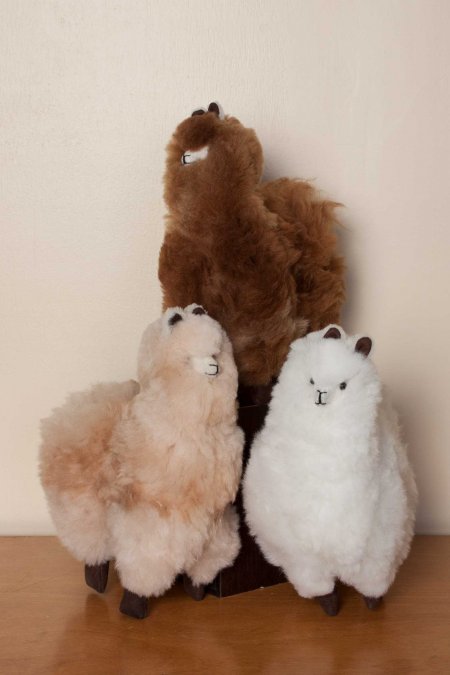

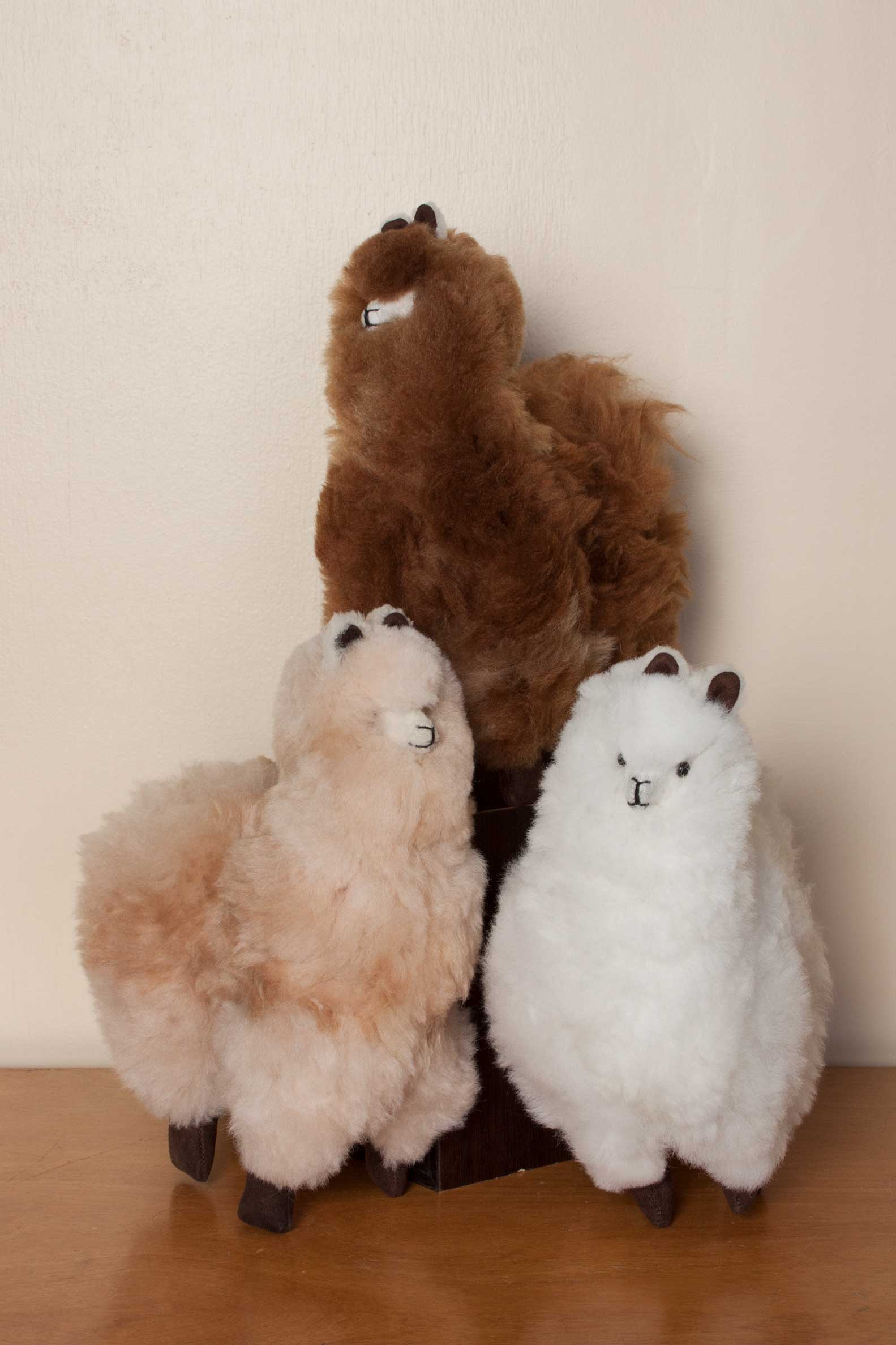
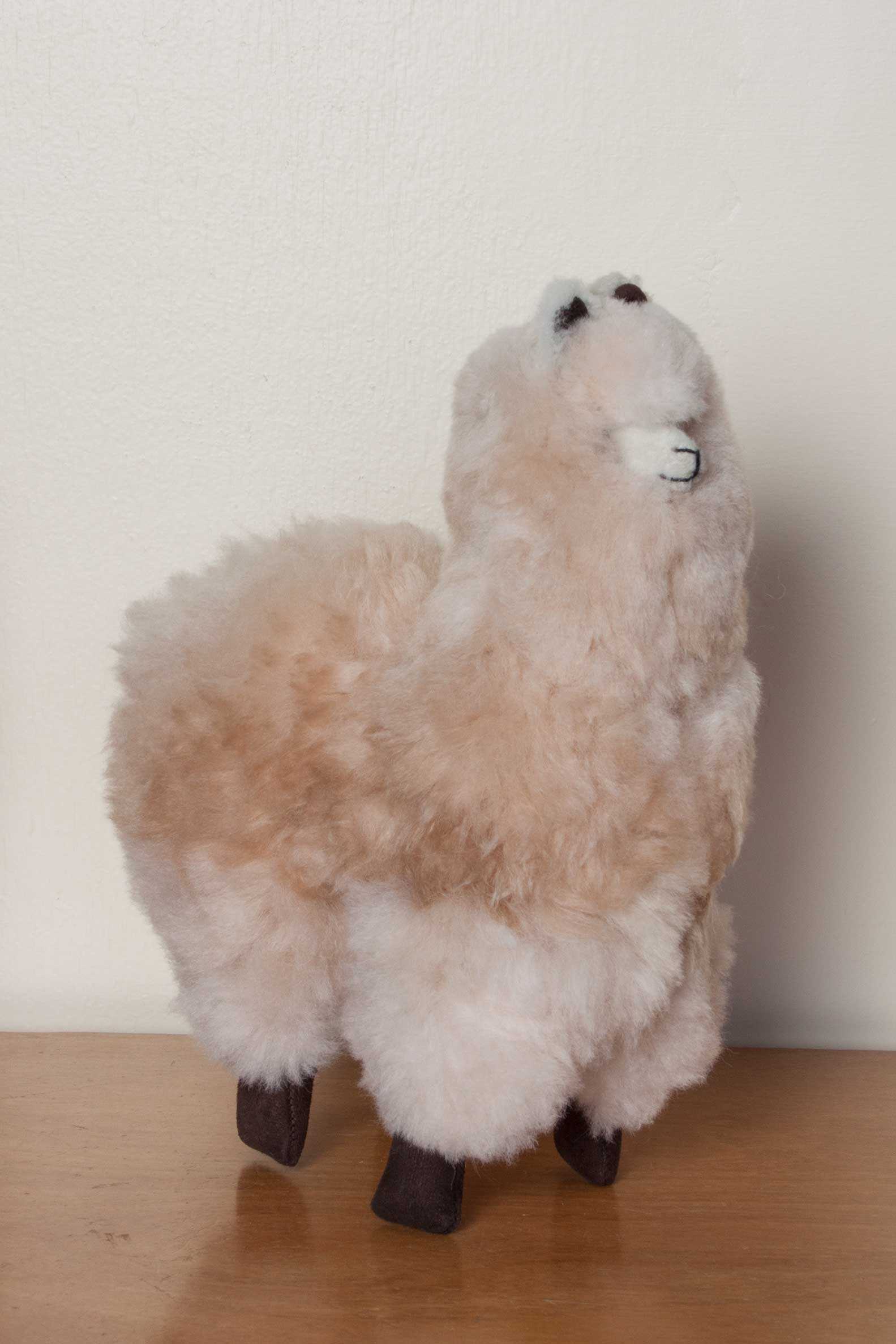
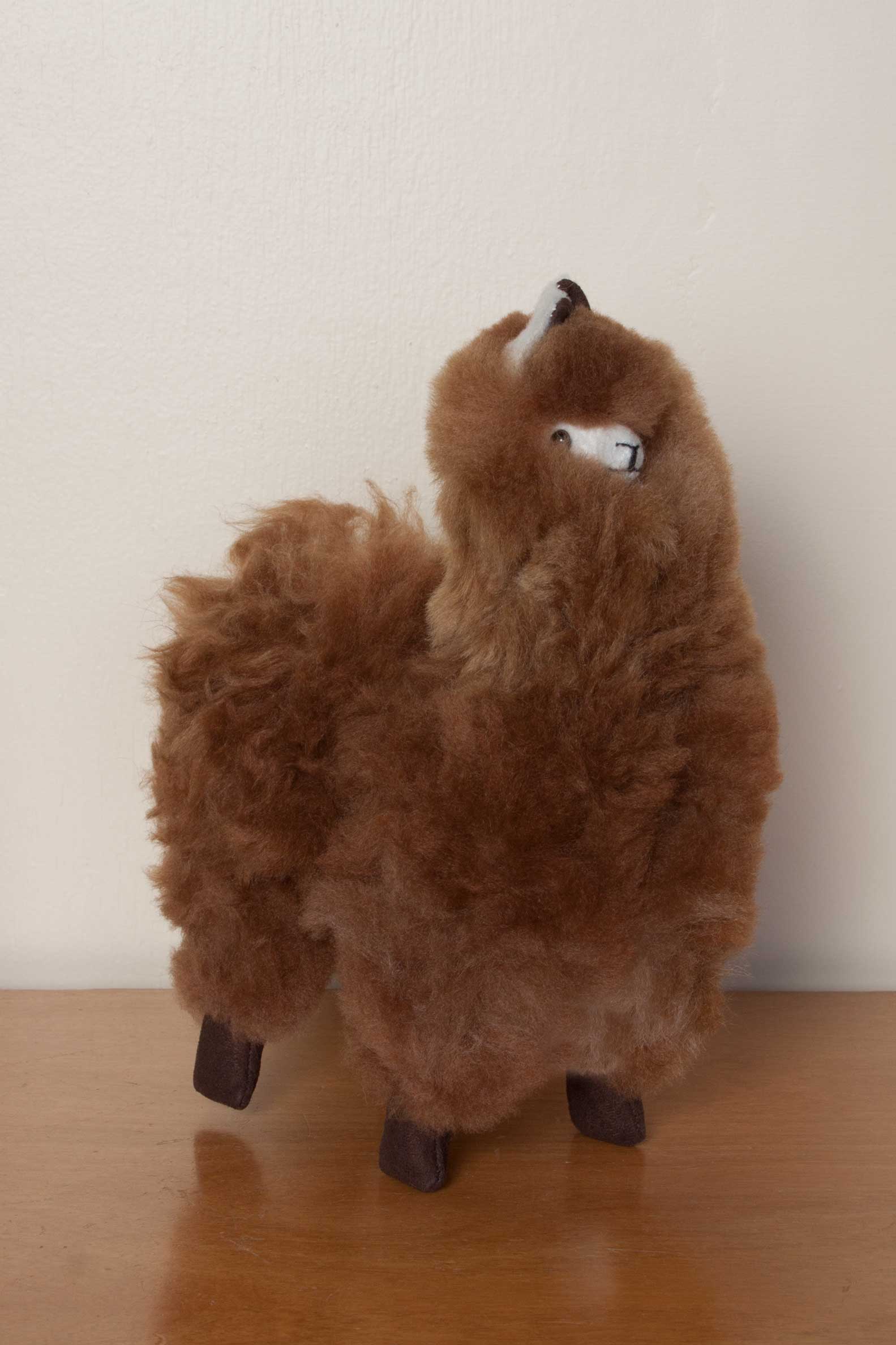
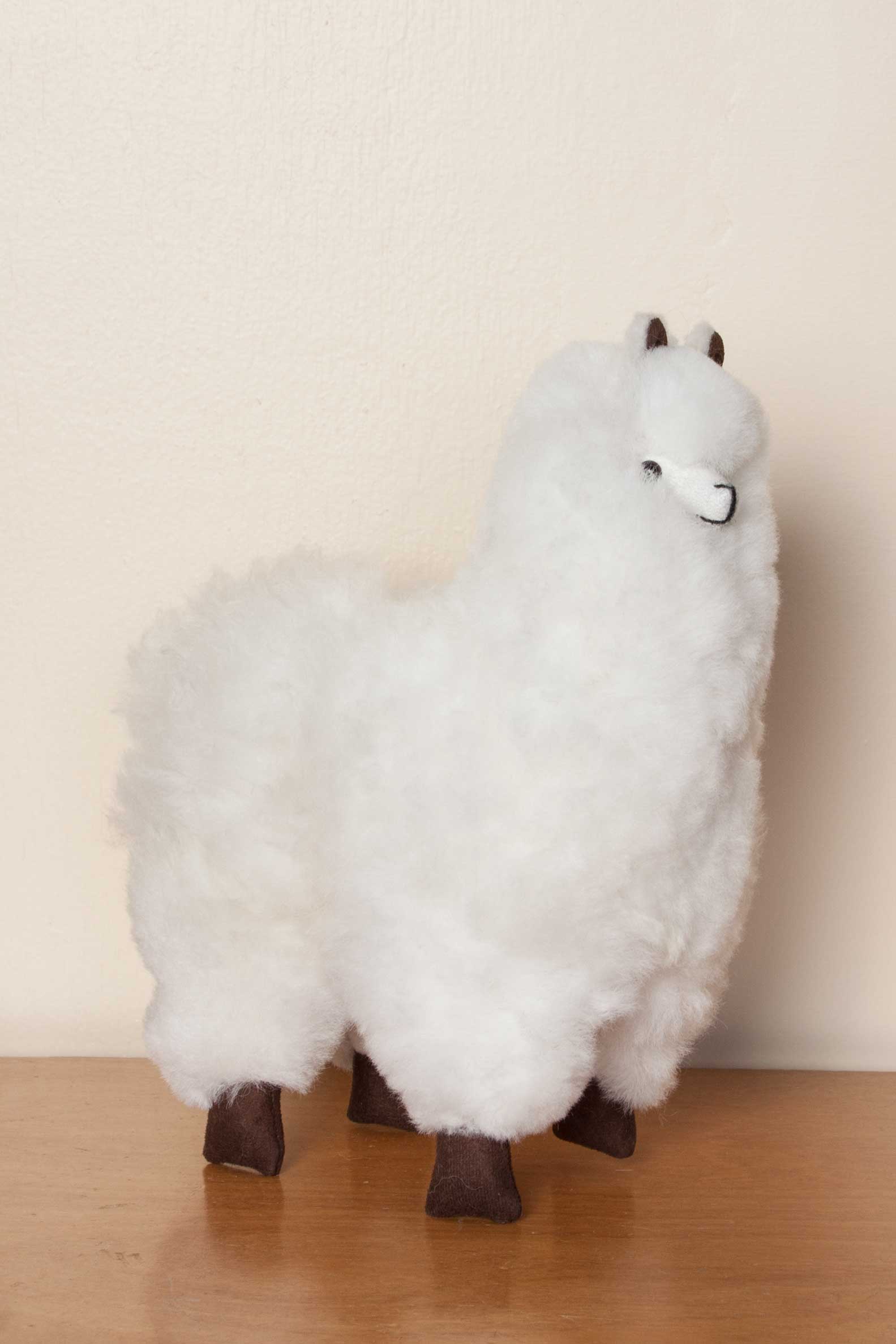

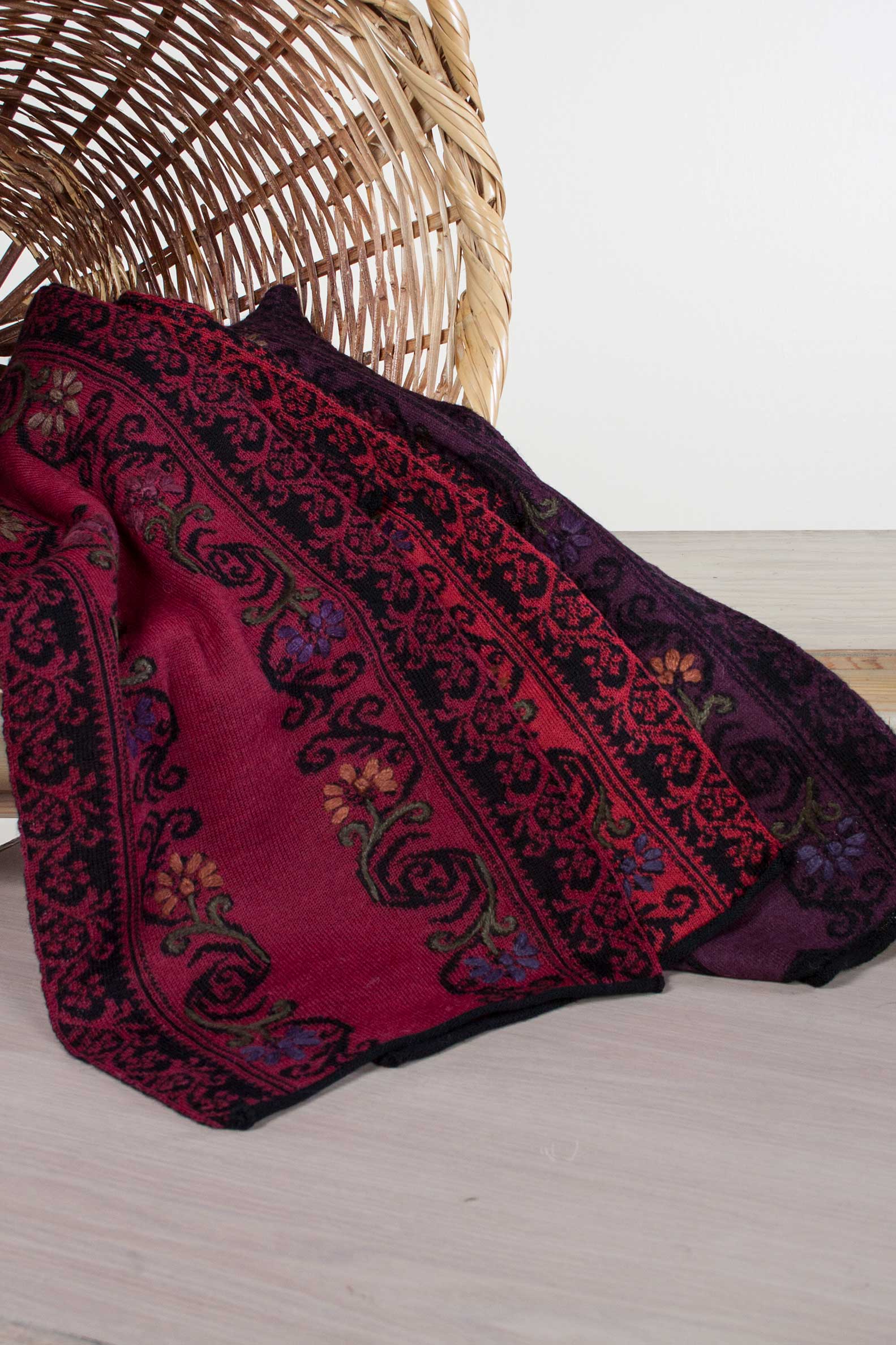
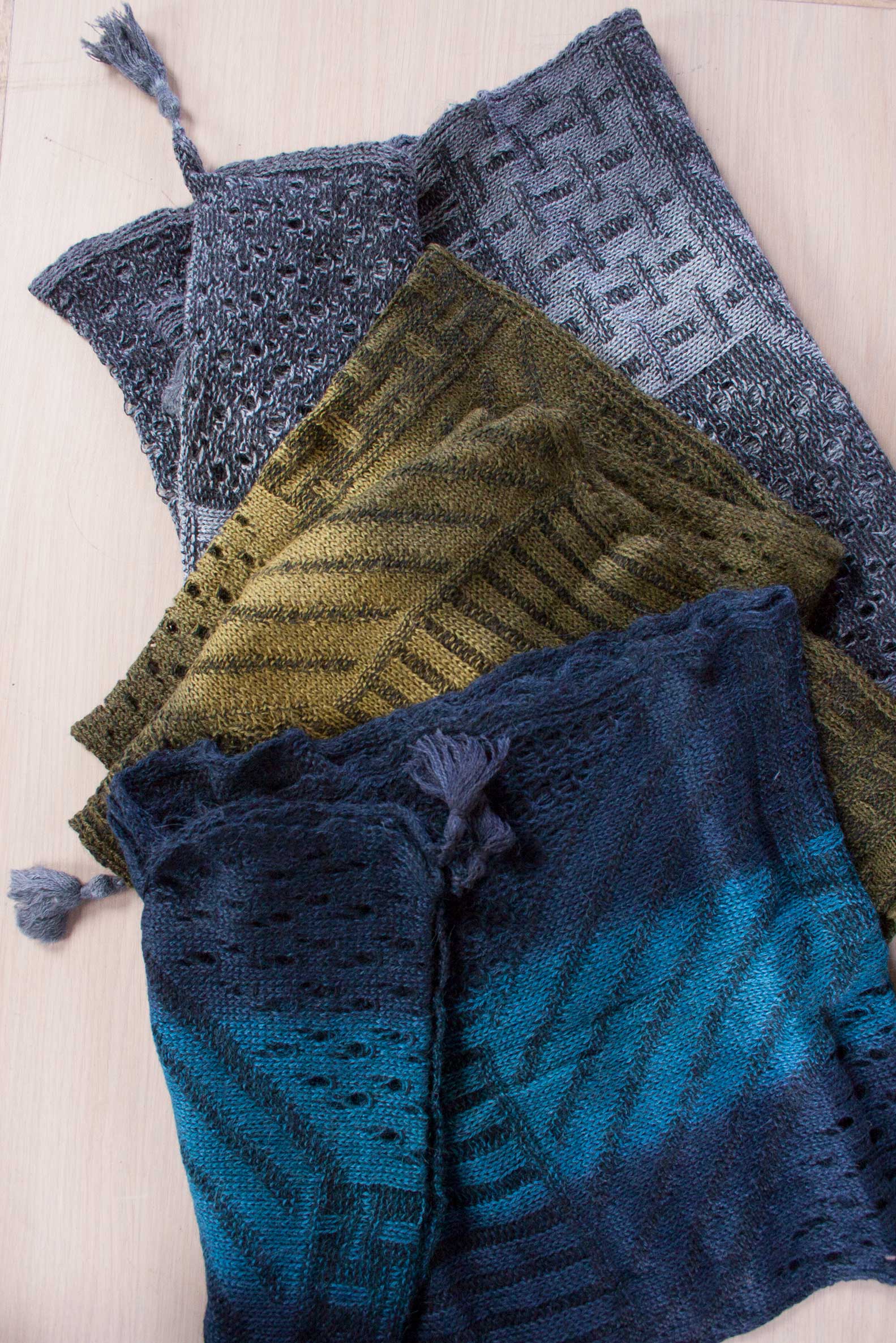

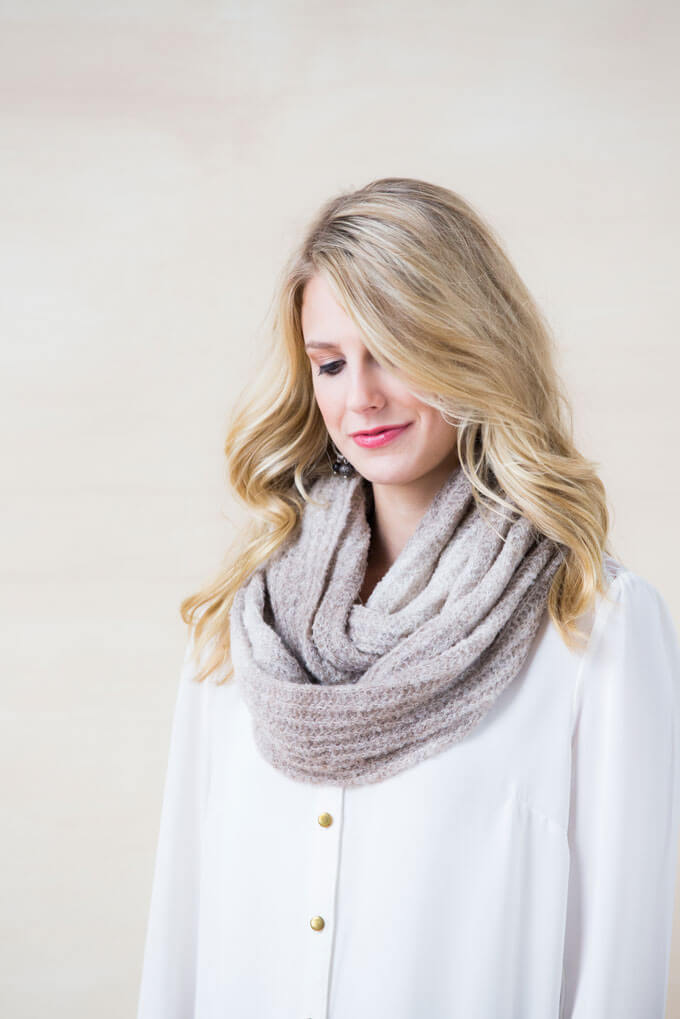
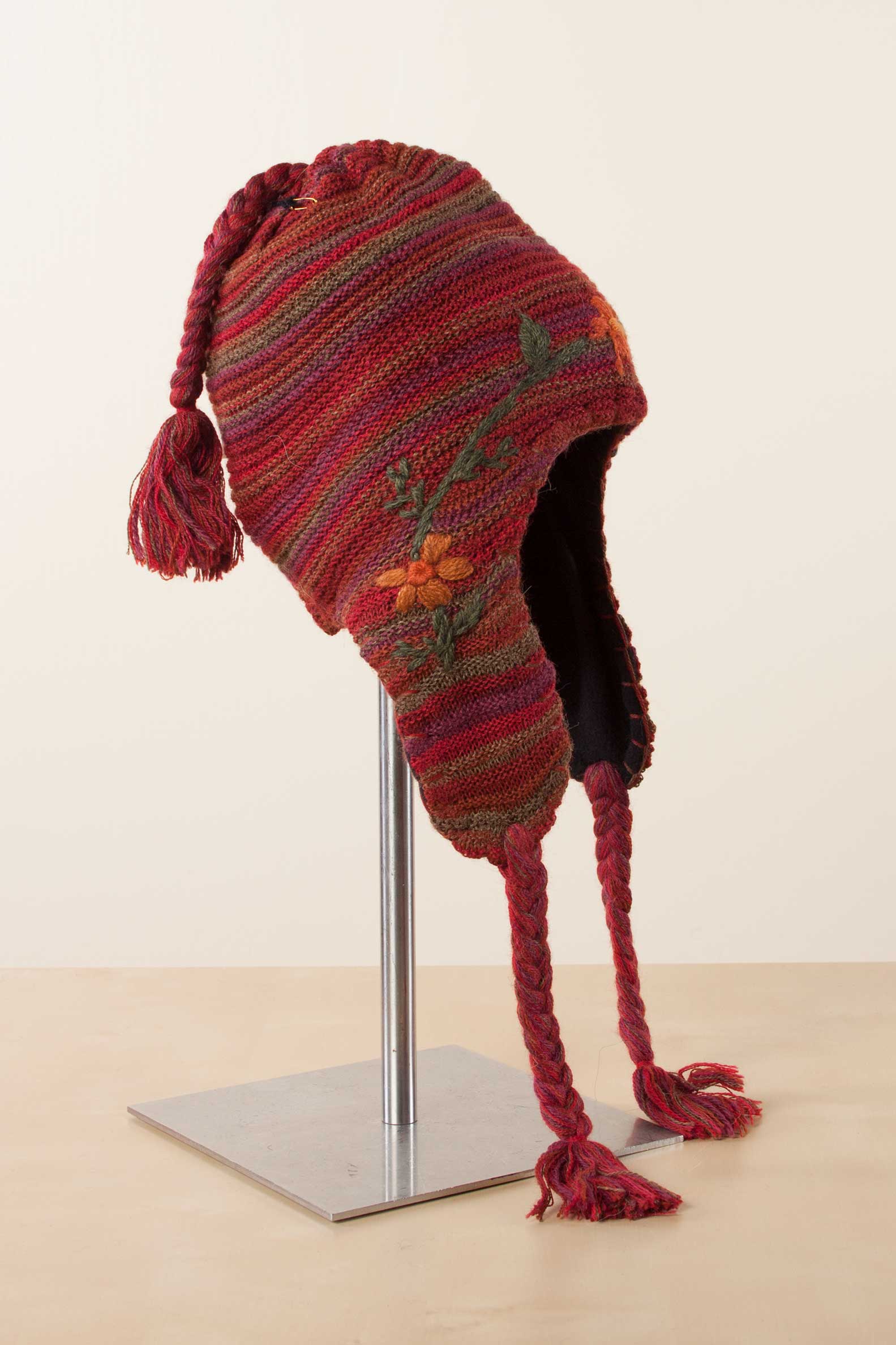

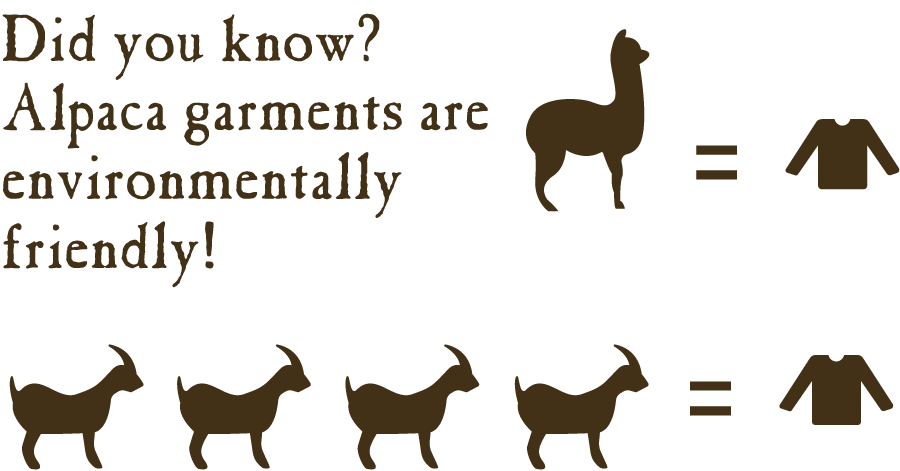
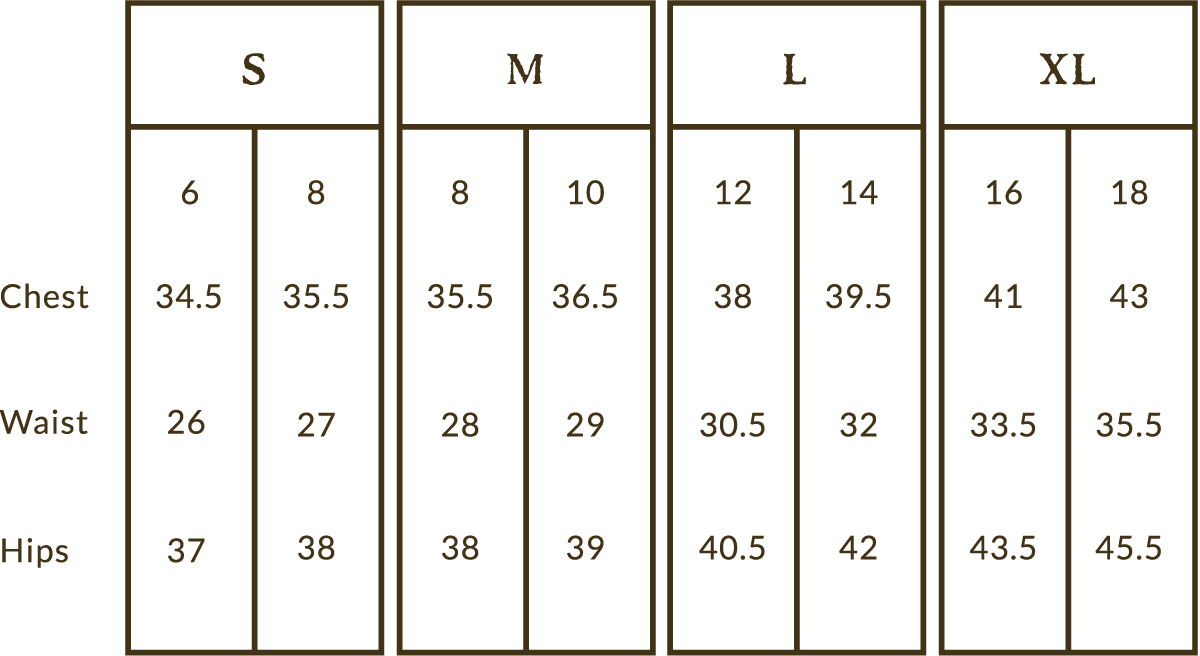

I love my Alpaca doll!
YC Shaffer
My husband and I stopped by our local mall tonight, and while we were walking around, we saw a large Alpaca doll in front of the store, and that was what drawn us into the store. We have seen and pet Alpaca in our local 4H fair and they are so cute. When I saw the Alpaca dolls for sale, I knew I had to get one. The one that I bought was in a dark purple/blue one, and it was the only one in this color vs. other ones are in the lighter colors. It is so soft, realistic and cute, I know I will show it to everyone who comes to visit our home. Oh, and the lady who works in the store was very helpful, she gathered all of the Alpaca dolls in the store and helped me to pick out the cutest one.
Jacquie
I was out on a date last night and the sight of alpacas drew us to the store. The lady working at the store was very sweet and told me all the information about the baby alpacas when I asked about the dolls. I ended up buying one that has the same color and poofiness as my hair (light beige and VERY poofy). My date thought it was the funniest thing and we’ll definitely come back at some point to probably get another.
silly guy
felix
I went to Juneau Alaska on a cruise and saw a store with a giant alpaca and I went into the store and saw a bunch of these all over the store. I held one and they were so soft. i convinced my mum to get me one and he’s so silly and cute and I love him very much